
The Black Pirate is a 1926 American silent action adventure film shot entirely in two-color Technicolor about an adventurer and a "company" of pirates. Directed by Albert Parker, it stars Douglas Fairbanks, Donald Crisp, Sam De Grasse, and Billie Dove. In 1993, The Black Pirate was included in the annual selection of 25 motion pictures to be added to the National Film Registry of the Library of Congress, being deemed "culturally, historically, or aesthetically significant."

The Thief of Bagdad is a 1924 American silent swashbuckler film directed by Raoul Walsh and starring Douglas Fairbanks, and written by Achmed Abdullah and Lotta Woods. Freely adapted from One Thousand and One Nights, it tells the story of a thief who falls in love with the daughter of the Caliph of Baghdad. In 1996, the film was selected for preservation in the United States National Film Registry by the Library of Congress as being "culturally, historically, or aesthetically significant".

Wild and Woolly is a 1917 American silent Western comedy film which tells the story of one man's personal odyssey from cowboy-obsessed Easterner to Western tough guy. It stars Douglas Fairbanks, Eileen Percy, Walter Bytell and Sam De Grasse. The film was adapted by Anita Loos from a story by Horace B. Carpenter and was directed by John Emerson.

Douglas Elton Fairbanks Jr. was an American actor, producer, and decorated naval officer of World War II. He is best-known for starring in such films as The Prisoner of Zenda (1937), Gunga Din (1939), and The Corsican Brothers (1941). He was the son of Douglas Fairbanks and the stepson of Mary Pickford, and his first marriage was to actress Joan Crawford.

The Mark of Zorro is a 1920 American silent Western romance film starring Douglas Fairbanks and Noah Beery. This genre-defining swashbuckler adventure was the first movie version of The Mark of Zorro. Based on the 1919 story The Curse of Capistrano by Johnston McCulley, which introduced the masked hero, Zorro, the screenplay was adapted by Fairbanks and Eugene Miller.

Robin Hood is a 1922 silent adventure film starring Douglas Fairbanks and Wallace Beery. It was the first motion picture ever to have a Hollywood premiere, held at Grauman's Egyptian Theatre on October 18, 1922. The movie's full title, under which it was copyrighted, is Douglas Fairbanks in Robin Hood. It was one of the most expensive films of the 1920s, with a budget estimated at about one million dollars. The film was a smash hit and generally received favorable reviews.

The Iron Mask is a 1929 American part-talkie adventure film directed by Allan Dwan. In addition to some sequences with dialogue, the film featured a synchronized musical score with sound effects and a theme song.
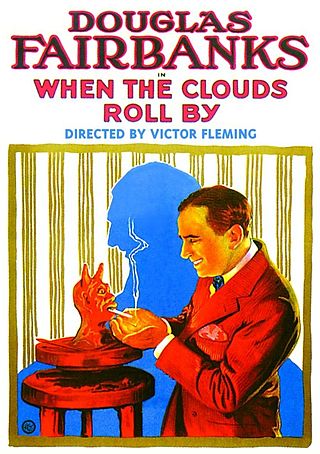
When the Clouds Roll By is a 1919 American comedy film starring Douglas Fairbanks and directed by Victor Fleming and Theodore Reed. After decades of not being seen by the public, the film was finally released in 2010 on DVD by Alpha Video with an original score by Don Kinnier.

(Sir) Charlie Chaplin (KBE) (1889–1977) was an English internationally renowned Academy Award-winning actor, comedian, filmmaker and composer who was best known for his career in Hollywood motion pictures from his debut in 1914 until 1952; he however subsequently appeared in two films in his native England. During his early years in the era of silent film, he rose to prominence as a worldwide cinematic idol renowned for his tramp persona. In the 1910s and 1920s, he was considered the most famous person on the planet.

Headin' South is a 1918 American silent romantic comedy film directed by Arthur Rosson with supervision from Allan Dwan and starring Douglas Fairbanks. The film is now considered to be lost.
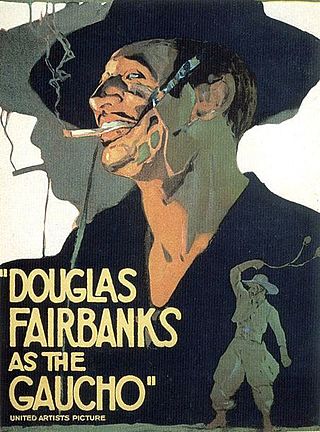
The Gaucho is a 1927 American silent adventure film starring Douglas Fairbanks and Lupe Vélez that is set in Argentina. The lavish adventure extravaganza, filmed at the height of Fairbanks' box office clout, was directed by F. Richard Jones with a running time of 115 minutes.

The Mystery of the Leaping Fish is a 1916 American short silent comedy film starring Douglas Fairbanks, Bessie Love, and Alma Rubens. Directed by John Emerson, the story was written by Tod Browning with intertitles by Anita Loos. A parody of Sherlock Holmes fiction, the film adresses the topic of narcotics in a very light comedic way.

The Americano is a 1916 American silent adventure / romantic comedy film directed by John Emerson and stars Douglas Fairbanks in his last production for Triangle Film Corporation. Based on the novel Blaze Derringer, by Eugene P. Lyle, Jr., the scenario was written by John Emerson and Anita Loos who also wrote the film's intertitles. The film was re-released by S.A. Lynch Enterprises on August 21, 1923. Three 16mm prints and one 8mm print of the film still exists. Set in a fictional South American country of Paragonia, it has been described as one of a group of films that supported United States imperialism by providing support to the idea of manifest destiny.

The Nut is a 1921 American silent film comedy directed by Theodore Reed.

Douglas Elton Fairbanks Sr. was an American actor and filmmaker. He was best known for his swashbuckling roles in silent films, including The Thief of Bagdad, Robin Hood, and The Mark of Zorro, but spent the early part of his career making comedies.
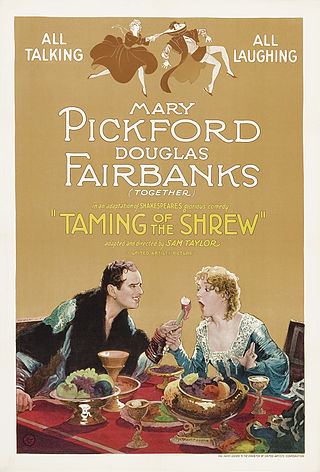
The Taming of the Shrew is a 1929 American pre-Code comedy film directed by Sam Taylor and starring Mary Pickford and her husband Douglas Fairbanks. It was the first sound film adaptation of the Shakespearean play of the same name. The film was adapted by Taylor from William Shakespeare's play.
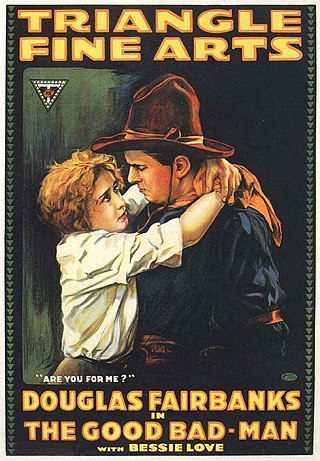
The Good Bad-Man is a 1916 American silent Western film directed by Allan Dwan. The film was written by Douglas Fairbanks, and produced by Fairbanks and the Fine Arts Film Company. It stars Fairbanks and Bessie Love.

A Modern Musketeer is a 1917 American silent adventure comedy film directed and written by Allan Dwan. Based on the short story, "D'Artagnan of Kansas" by E. P. Lyle, Jr., the film was produced by and stars Douglas Fairbanks. A now complete and restored print of the film still exists and is currently in the public domain.
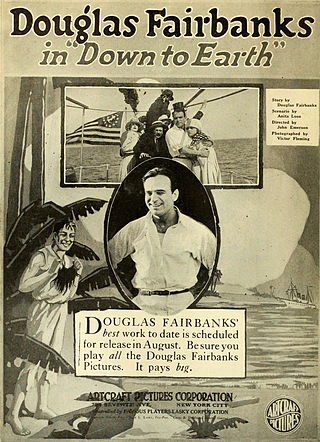
Down to Earth, also known as The Optimist, is a 1917 American comedy romance film starring Douglas Fairbanks and Eileen Percy, and directed by John Emerson. Most of the principal photography was filmed in Yosemite National Park.

Man Bait is a 1926 American silent comedy film directed by Donald Crisp and starring Marie Prevost, Douglas Fairbanks Jr., and Kenneth Thomson.




















